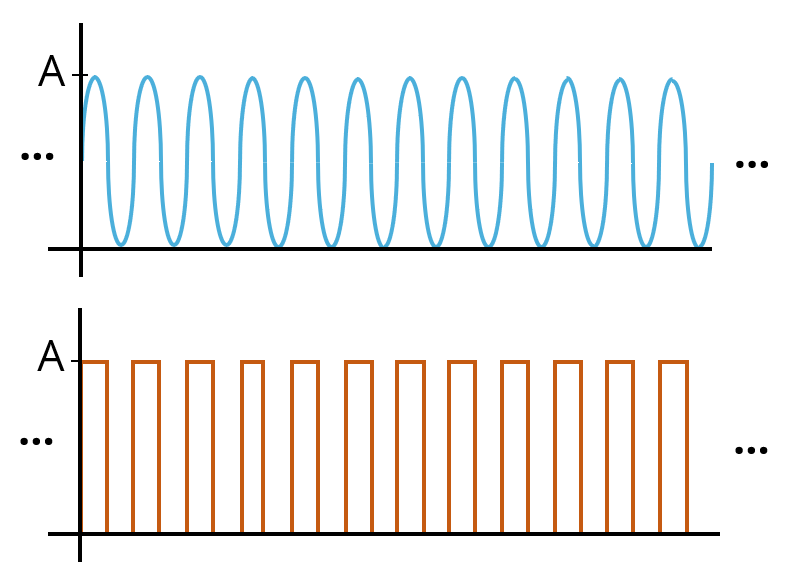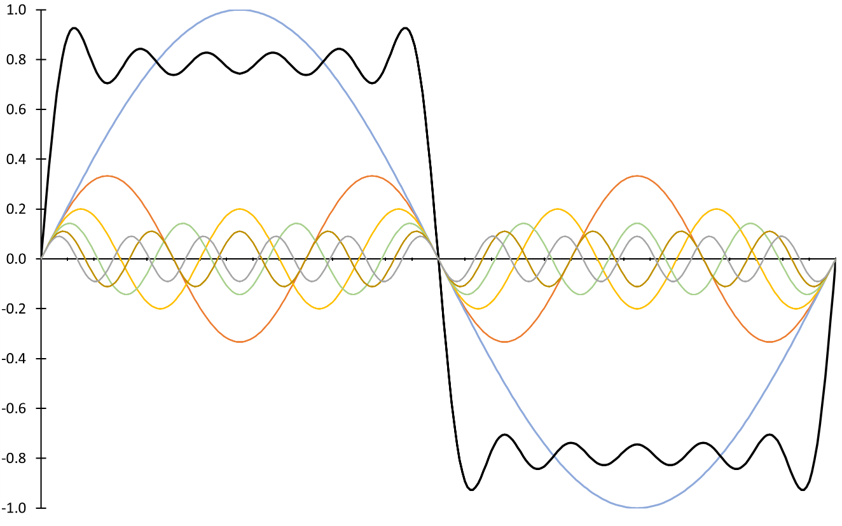EMC Question of the Week: December 19, 2022

If a 100-MHz sine wave and a 100-MHz square wave both have the same peak-to-peak amplitude, which has the stronger harmonic at 100 MHz as measured on an EMI test receiver?
- the sine wave
- the square wave
- they are the same
- depends on the detector used
Answer
The best answer is “b.” The EMI test receiver will display the rms value of the sine wave or the rms value of the first harmonic of the square wave. For example, if the sine wave has a peak-to-peak value of 2 volts, the receiver will display an amplitude of 0.707 volts (117 dBμV) at 100 MHz. For a square wave with the same 2-Vpp amplitude, the rms amplitude of the first harmonic is 0.45 times the peak-to-peak value or 0.9 volts (119 dBμV).
The waveforms shown in the figure both have a DC component, A/2. The sine wave only has harmonics at DC and 100 MHz. The square wave has harmonics at odd multiples of 100 MHz that decrease in amplitude proportional to the frequency.
The figure below shows how the first six odd harmonics of a square wave add in the time domain to produce a waveform that is starting to resemble the square wave. Note that the amplitude of the first harmonic (in blue) is greater (by 2 dB) than the amplitude of the square wave.

The type of detector used won't make any difference for this continuous, periodic signal.
Have a comment or question regarding this solution? We'd like to hear from you. Email us at
